Pollock
Atlantic Ocean, northeast (FAO 27)
Deelgebieden: North Sea, central
Gillnets
- Jan
- Feb
- Mar
- Apr
- May
- Jun
- Jul
- Aug
- Sep
- Oct
- Nov
- Dec
Cod-like fishes belong to the Gadidae family. This includes the Atlantic and Pacific cod, pouting, haddock, whiting, European pollock, Alaska pollock and saithe. They live near the seabed in coastal waters and in deeper waters. During the day, they aggregate in schools. At night, they separate to forage independently. Gadidae are omnivorous fish that feed on worms, molluscs, bivalves, crustaceans and small fish. They migrate over large distances to spawn and to hunt on large schools of herring and smelt.
Pollock belongs to the same family as cod. There are two very similar species: the white and black pollock. White pollock is also called pollack. This species can get up to 130 cm and get 8 years old. Both pollock species can be found in the eastern Atlantic Ocean, white pollock also occurs in the western Atlantic. Black pollock can reach the same size as white pollock, but gets much older, about 25 to 30 years old. The white pollock is commercially less important than black pollock. Because it is commenly found around ship wrecks, anglers love to catch this fish. When you find pollock on the menu in the Netherlands, it is mostly another species, the Alaska pollock.
Atlantic Ocean, northeast (FAO 27)
Deelgebieden: North Sea, central
Gillnets
Atlantic Ocean, northeast (FAO 27)
Deelgebieden: Norwegian Sea, Spitzbergen and Bear Island
Bottom otter trawl
Atlantic Ocean, northeast (FAO 27)
Deelgebieden: Norwegian Sea, Spitzbergen and Bear Island
Gillnets
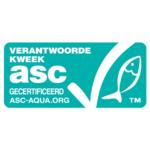
Fish with the ASC label is farmed in a sustainable manner.
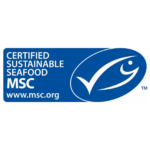
Fish with the MSC label is caught sustainably.
This fish is not being overfished or is being responsibly farmed, with minimal impact on the environment.
This fish is a second choice. There are still some improvements to be made in this fishery or fish farm.
Do not buy this fish. It's being overfished or the way it's farmed or caught has a negative impact on the environment.
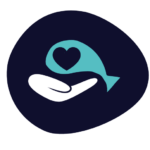
There is fish available of this species that is farmed or caught using high welfare standards.
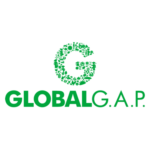
GlobalG.A.P. certified farms are doing a step in the right direction in terms of sustainability. A few species with this label are getting a better score on the VISwijzer.
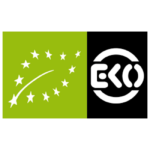
Organic standards are the strictest when it comes to fish feed. They also require certain measures for animal well-being.